How does childhood connect with spirituality?
Originally published on Global Voices
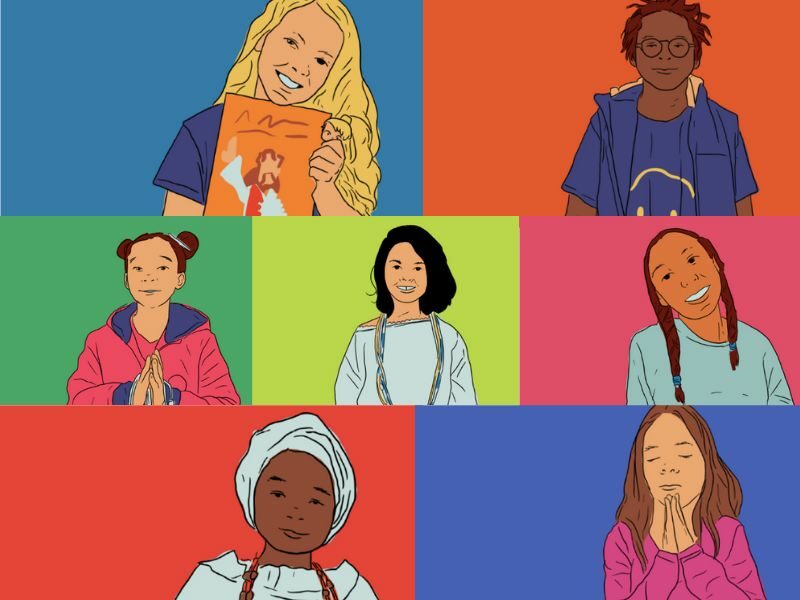
| Arte: Magno Borges/Agência Mural
This text was written by Jacqueline Maria da Silva and Jariza Rugiano and illustrated by Magno Borges, and it was originally published on April 20, 2023, at the Agência Mural website. The article is reproduced here under a partnership agreement with Global Voices, with edits.
“If I could, I would tell the other children that they [the entities] never do and never will harm anyone,” says Janaina, 9, a resident of the city of Diadema, in São Paulo's metropolitan area. The entities to which she refers are the exus and orixás, worshipped in umbanda, an Afro-Brazilian religion, which quotes them in chants.
The girl says that, although her classmates know about her belief, she does not sing the songs of the “terreiro” (place of worship) aloud at school, because she believes that they could be afraid or judge her for it. For her, there is prejudice against religions of African origin.
She gives as an example the wrong understanding of the term “macumba,” often used in a pejorative way in Brazil.
“It is a request made to the guides [entities or spiritual guides for each person], with the intention of doing good,” explains Janaina.
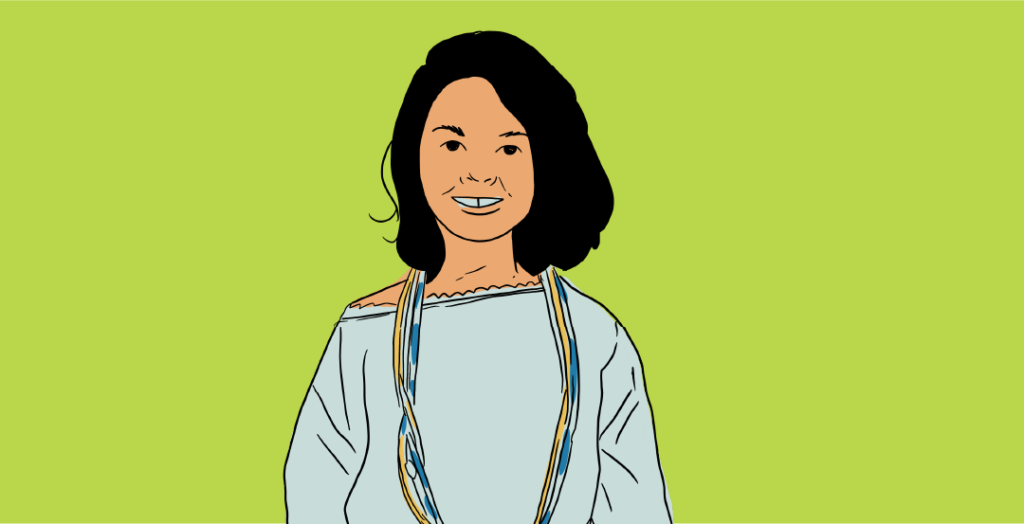
Janaina, from Diadema, São Paulo, is 9 year-old and an “umbandista” | Image: Magno Borges/Agência Mural
This feeling is not unusual among children who follow some belief outside the great monotheistic religions, in a country like Brazil — a poll from the Datafolha Institute, in 2020, indicated that over 80 percent of Brazilians identify as Christians (Catholic, Evangelical, or Spiritist).
According to psychiatrist Florisvaldo Torres, religion can bring benefits such as helping in socialization and dealing with differences from concepts such as equality and respect. On the other hand, he warns about the danger of religious experiences that he calls “castrating”.
“It can generate guilt or fear, preventing or hindering the child from living childhood experiences and developing emotionally,” he says.
There are few studies on this aspect of religion and childhood, but a survey carried out by Agência Mural in the data panel of the National Ombudsman for Human Rights, a branch of Brazil's Ministry of Human Rights and Citizenship, between the years 2020 and 2022, indicates an increase in the number of occurrences of religious intolerance, including against children.
The numbers may be underestimated, as it is based only on who contacted to file a complaint. In 2020, the number of protocols was 515, followed by 529 in 2021 and 736 in 2022, through the Dial 100 line.
One report released in January 2023 pointed to an increase in cases of religious intolerance in Brazil, with African religions being the most affected. The study is organized by the Center for the Articulation of Marginalized Populations and the Observatory of Religious Freedoms (Centro de Articulação de Populações Marginalizadas e pelo Observatório das Liberdades Religiosas, in Portuguese).
In addition to Janaina (umbanda's practitioner), Agência Mural listened to young people from six other religions institutionalized in Brazil — Candomblé, Islam, Catholicism, Buddhism, Spiritism, and Protestantism (Evangelical).
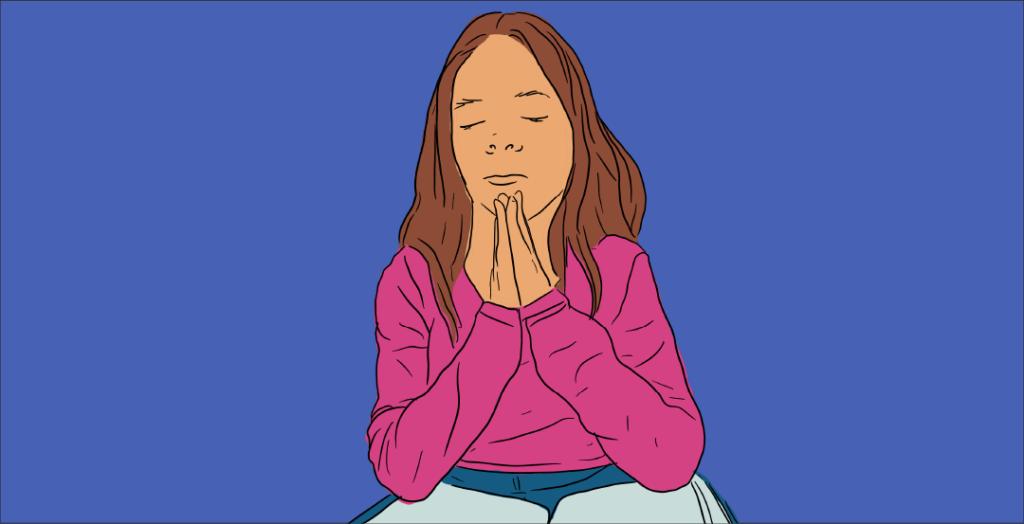
Alice, a 9 year-old, attends the Baptist Church in Pedreira, in the south of São Paulo | Image: Magno Borges/Agência Mural
She raps for God
“What I like the most there is listening to the word of God and speaking things from the heart to him.” This is what 9-year-old Alice describes about the children's gathering at Primeira Igreja Batista Bíblica in Jardim Miriam neighborhood. The girl frequents the place, near her house in the district Pedreira, city of São Paulo.
Every weekend, while her parents are in the church, she stays in one of the rooms, where she sings, draws, prays, or reads the Bible, with classmates from the same age group.
When she grows up, she plans to sing at the church. Music, she says, is also a prayer that God listens to and that is why she raps to Jesus, her favorite figure from the Bible: “He gives an example of how you should speak well of others, eating well, an example of everything.”
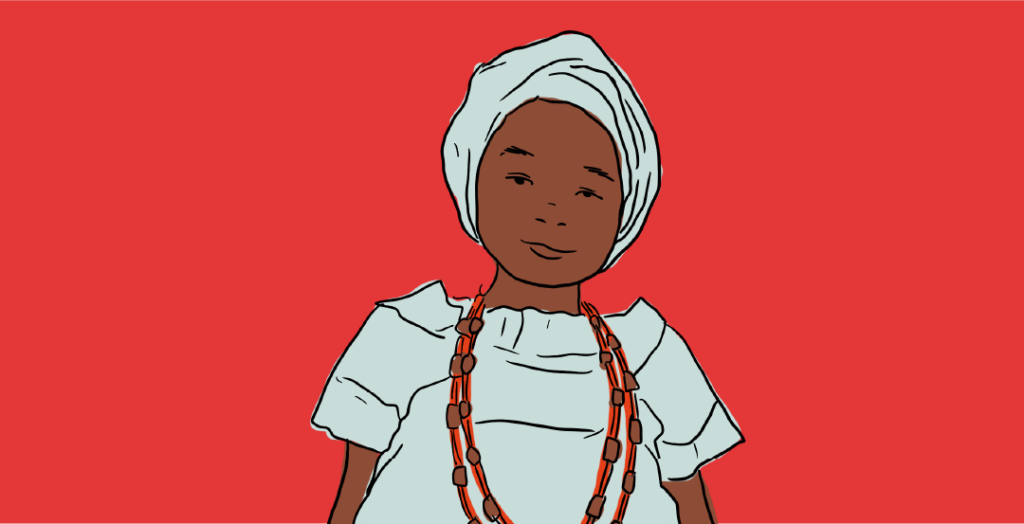
Ana Paula, 8 years old, is from São Bernardo do Campo and a candomblé practitioner | Image: Magno Borges/Agência Mural
‘The orixás take care of us’
For Ana Paula, 8, being at Candomblé ceremonies is similar to the days when she visits her grandmother. “When I haven’t seen my grandmother for a long time and go to her house, it gives me a good feeling. When I pray too, I get peaceful and calm. I feel my energy as happy,” she says.
Ana lives in the city of São Bernardo do Campo, in São Paulo’ metro area, and has followed the African-based religion since the age of 3. According to its doctrine, it is as if she were 5, because this is considered the “age of the saint,” that is, how long a person has as an initiated person into the religion.
For this period in the doctrine, she is considered a Yalasé, a title that allows her to help with the “obligations,” tasks related to the festive calendar of candomblé. “I have already decorated sweets and flowers.”

Milena, 9 years old, from Vila Marari, South Zone of São Paulo, is a spiritist | Image: Magno Borges/Agência Mural
Spiritist evangelization through drawings
Milena, 9, often expresses her religiosity through drawings. She has a folder full of them and two taped to the head of her bed, one of Jesus and the other of a Guardian Angel, to give make her feel safe during her sleep.
Many of the drawings are made during the children's evangelization, a meeting of children in the spiritist center that she attends near her home, in Vila Marari, São Paulo. Milena says that before class, the children sing children's religious songs and pray the Our Father's prayer. They then receive a magnetic pass.
“I sit on a stool, close my eyes and they pray for me. I feel happy,” she says.
In Spiritism, Milena learned that when she prays it is like making a call to God. This contact, according to her, can also be made at home through the Gospel at home or in her prayers before bed, to avoid nightmares and scare away sadness.

Moshood, 11, de Diadema, na Grande São Paulo, é muçulmano | Imagem: Magno Borges/Agência Mural
He studies Arabic to understand Islam
Moshood, 11, lives in Diadema, also in the great São Paulo area. He practices Islam with his father, who was born in Nigeria and presides over a mosque. The boy attends the place every Friday to accompany the hadith, reactions that Prophet Muhammad took in the face of some situations and which serve as religious guidance.
At the same place, he has been taking Arabic classes for about a year. “I wanted to go deeper into my religion. My family found this Arabic [course] and it was a really cool thing for me, I made new friends and I'm learning a lot”, he explains.
The religious routine at home consists of the practice of five prayers a day, he says. Although not required to fast until adolescence, the boy does not eat during the day while in Ramadan period, which is the celebration of the Qur'an marked by fasting.
“When you complete all the fasting, God erases all the bad things you have done in the past. That's why I like fasting, which is a way to cleanse,” he says. “Not that I do anything wrong,” he adds.
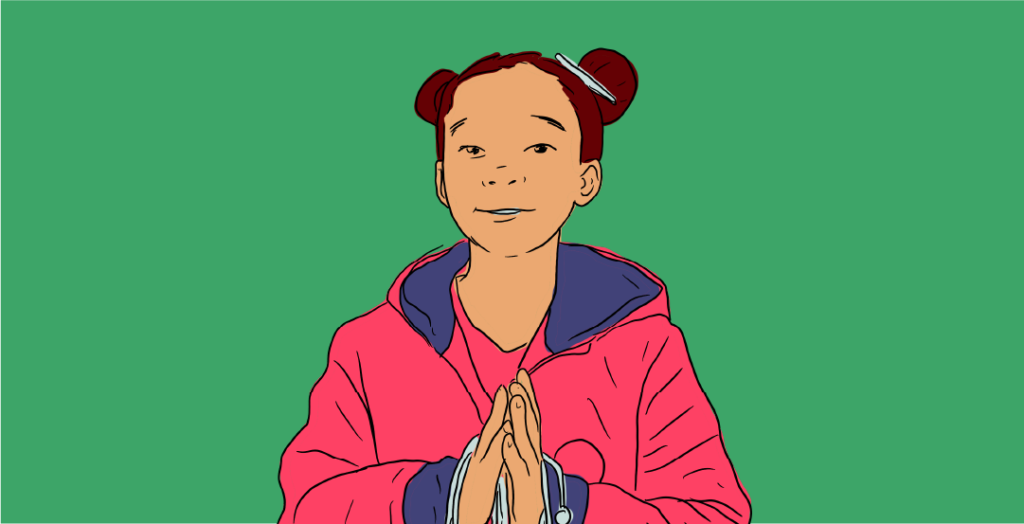
Luiza, 8 years-old, from Vila Clara, São Paulo, is a Buddhist | Image: Magno Borges/Agência Mural
Buddhist Mantra and juzu in hands
Luiza, 8, learns about Buddhism online at home in the Vila Clara neighborhood of São Paulo. In addition to classes, she meets every night with her family to pray in front of the altar that is in the living room, a replica of the one that exists in the temple. Practice that is done with the juzu in her hands, prayer beads used to bring focus.
Luiza avoids discussing religion with her schoolmates. “I pray for them [colleagues], but they don't need to know I'm a Buddhist,” she explains.
At home, she has two books about the religion. One of them is the ‘Daigo,’ which she uses to paint, and the other is ‘The Cherry Tree Boy,’ which she says she enjoys reading because it teaches about family.
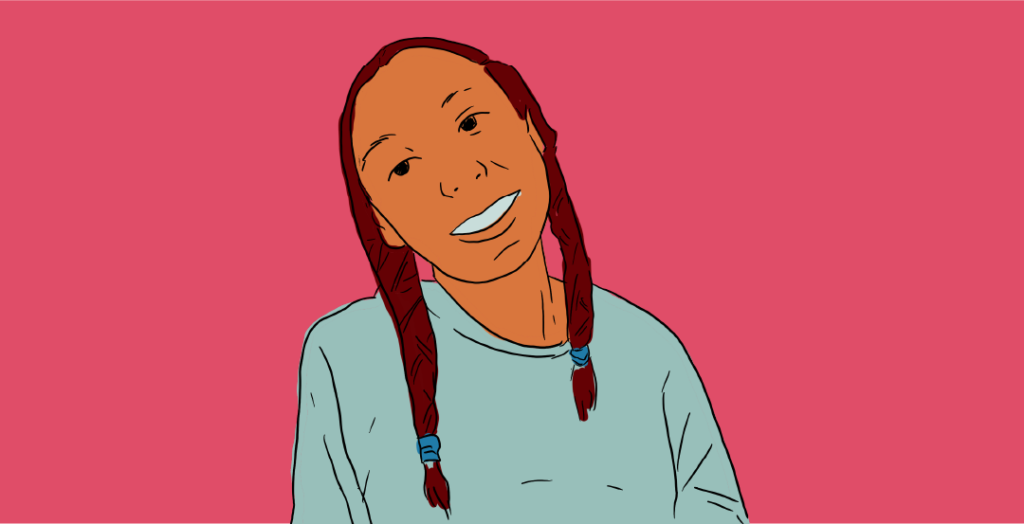
Isabelly, 9 years old, lives in Suzano, and is a Catholic | Image: Magno Borges/Agência Mural
Responsibility as an altar girl
“I strike the bell, there are times I help in the offertory,” describes 9-year-old Isabelly, citing the part of the Catholic Mass in which the bread and wine stand out as a representation of the body and blood of Jesus Christ. These are some of her assignments as an altar girl, a kind of aid of the priest during the celebration at the Roman Catholic Apostolic Church, a function she has exercised since she was 4.
She is currently an altar girl at Igreja matriz Santa Suzana in Suzano, a city nearby São Paulo, where she lives with her parents.
She attends a specific course weekly, with classes taught by her own mother. There she learns about communion accessories, altar positions, and prayers.
“We learn stories from the Bible, the teachings and how to use the commandments in our lives,” she points out.
Isabelly says that the classes also help to associate biblical teachings with everyday events, such as the act of honoring parents, described in the Ten Commandments.
Post a Comment